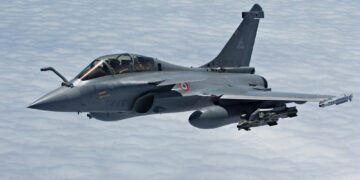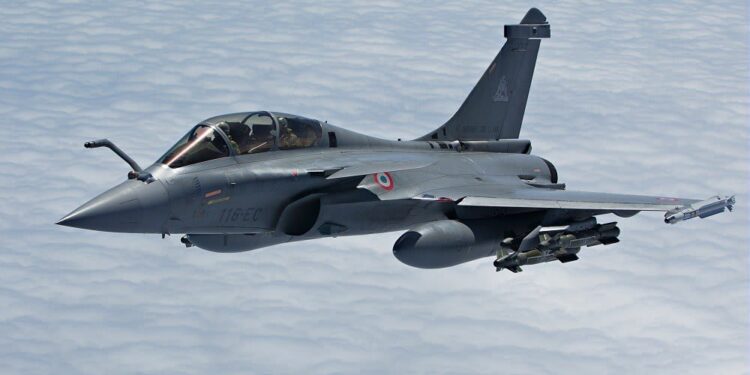Tata Advanced Systems and Dassault Aviation partner to manufacture Rafale fighter jet fuselages in India. A new Hyderabad facility will produce key sections, marking the first production of Rafale fuselages outside France, with full-scale output expected by FY2028.

Tata Advanced Systems and Dassault Aviation have signed four Production Transfer Agreements to manufacture the fuselage of the Rafale fighter aircraft in India — a historic first outside France.
This strategic move marks a major boost for India’s defence manufacturing and aerospace capabilities under the ‘Make in India’ initiative.
Dassault Aviation Highlights Major Investment in India’s Aerospace Sector
According to Dassault, this marks a major step forward in strengthening India’s aerospace infrastructure. The facility is set to become a key hub for high-precision manufacturing, reinforcing the country’s capabilities in advanced defense production.
Tata Advanced Systems, in collaboration with Dassault Aviation, will establish a state-of-the-art manufacturing facility in Hyderabad to produce major structural components of the Rafale fighter jet.
This includes the lateral shells of the rear fuselage, the entire rear section, the central fuselage, and the front section, marking a significant step towards indigenous aerospace manufacturing in India.
Tata-Dassault to Begin Fuselage Production for Rafale Jets in India by FY2028
The first fuselage sections for Rafale fighter jets are projected to roll off the production line in the fiscal year 2028. Once operational, the facility will have the capacity to deliver up to two fully assembled fuselages each month, marking a significant step in indigenous defence manufacturing.
This marks a significant milestone in strengthening our supply chain in India,” said Eric Trappier, Chairman and CEO of Dassault Aviation. “With the expansion of our local partners, including TASL—one of India’s leading aerospace companies—this growing supply chain will play a crucial role in the ramp-up of the Rafale program. Supported by Dassault, it will continue to meet our standards for quality and competitiveness.
Table of Contents
Sukaran Singh, CEO and MD of Tata Advanced Systems Limited, stated:
“This partnership represents a pivotal milestone in India’s aerospace journey. The full-scale production of the Rafale fighter jet’s fuselage in India highlights the growing confidence in Tata Advanced Systems’ expertise and reinforces our strong collaboration with Dassault Aviation. It also signifies the impressive strides India has made in developing a modern and resilient aerospace manufacturing ecosystem, capable of supporting global defense programs.
Dassault Aviation stated that the partnership is designed to reinforce India’s role in the global aerospace supply chain, while also advancing the country’s objective of achieving greater economic self-reliance.
The fuselage, or the main body of an airplane, is essentially a long hollow tube that holds all the components of the aircraft together, as explained by NASA. Its hollow design helps reduce the overall weight of the airplane. Like many other parts of an aircraft, the shape of the fuselage is usually tailored to suit the specific mission the aircraft is designed to perform.
A supersonic fighter jet features a slender, streamlined fuselage designed to minimize drag during high-speed flight. In contrast, an airliner has a wider fuselage to accommodate the maximum number of passengers. The pilots in an airliner sit in a cockpit located at the front of the fuselage, while passengers and cargo are carried in the rear section. Typically, the fuel is stored in the wings. For fighter jets, the cockpit is usually positioned on top of the fuselage, with weapons mounted on the wings. The engines and other essential components are integrated accordingly to support the aircraft’s combat role.
The weight of an aircraft is spread throughout its structure, with the fuselage—housing passengers and cargo—accounting for a major portion of the total weight.















 Categories
Categories









